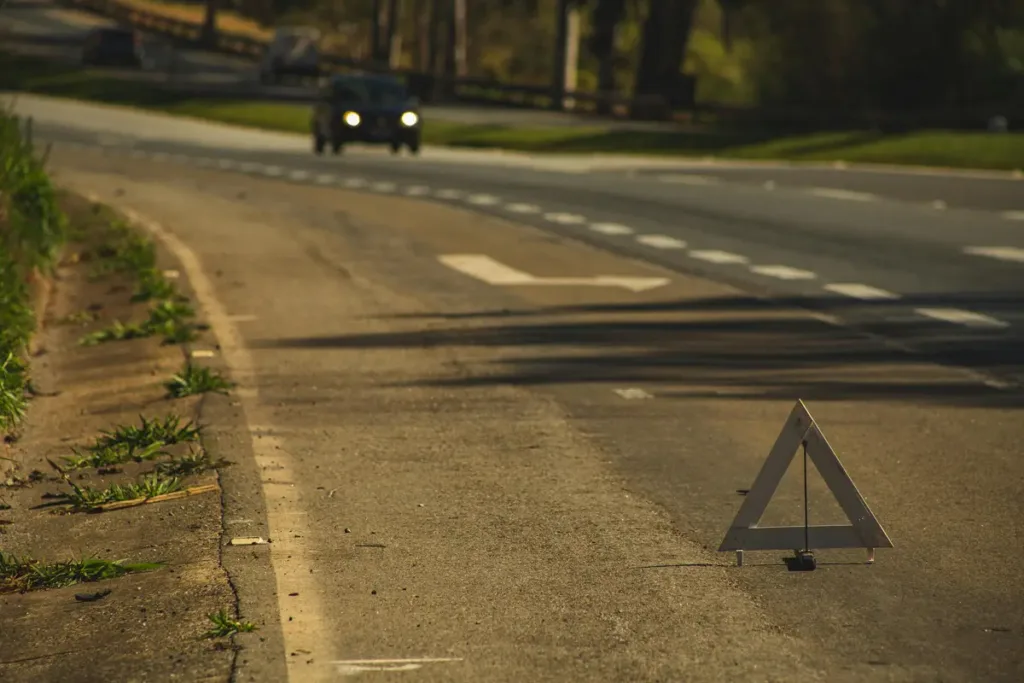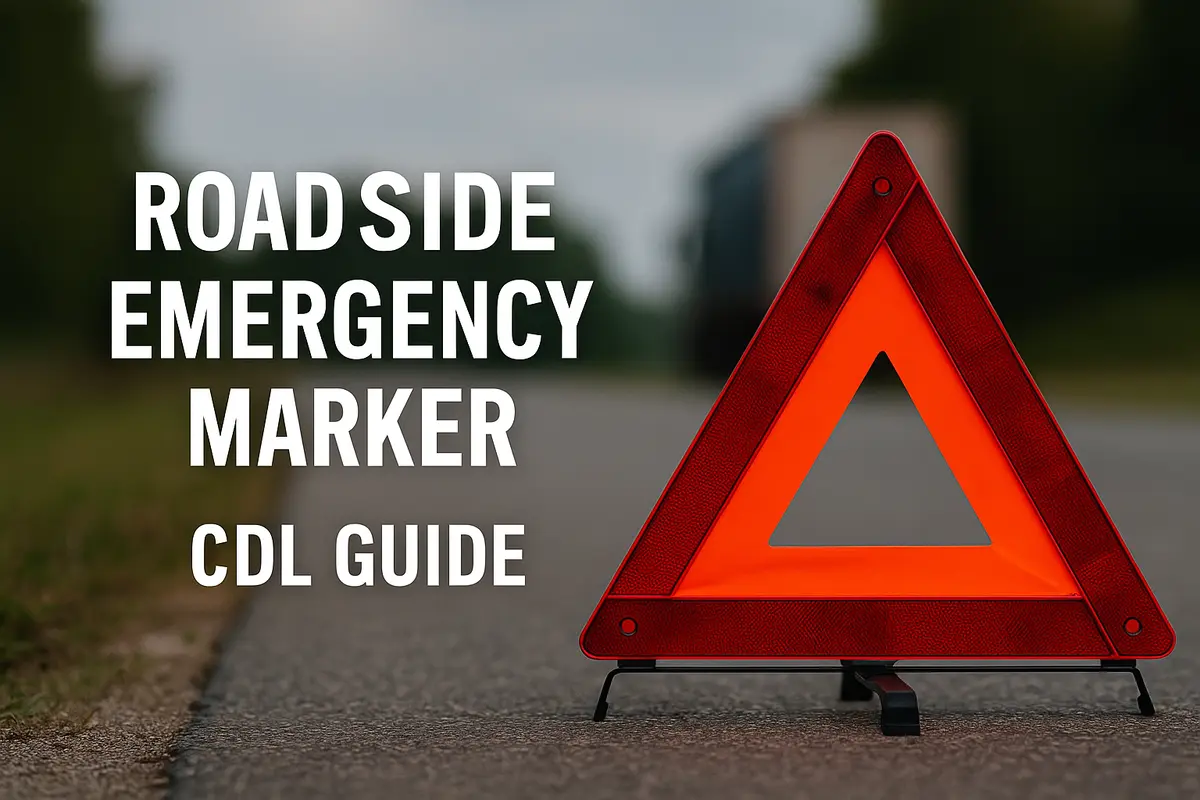The highway doesn’t wait for breakdowns—and neither does the DOT. When a truck stops on the shoulder, the clock starts ticking. You have 10 minutes. That’s how long CDL drivers have to place a roadside emergency marker before their vehicle becomes a compliance risk, a liability, or worse—a hazard to other motorists.
If you own or manage a fleet, this isn’t just a safety issue. It’s a legal and financial one. Misplaced or missing warning triangles can lead to DOT out-of-service violations, lost contracts, and exposure in the event of an accident.
At Drivers Files Online, we help CDL managers turn emergency readiness into a documented part of their safety strategy. Triangle placement isn’t just a box to check—it’s a decision that protects lives, your business, and your brand.
👉 Want to track safety compliance the smart way? Set up Drivers Files Online now.
Why Roadside Emergency Markers Are Non-Negotiable
According to FMCSA regulation 392.22, when a commercial vehicle is stopped on the highway for reasons other than a traffic stop, the driver must:
- Turn on hazard flashers immediately
- Place three emergency triangles within 10 minutes
- Remove the triangles only when the vehicle is moving again
Placement must follow this specific pattern:
- 10 feet behind the truck, on the traffic side
- 100 feet behind the truck, centered in the lane
- 100 feet in front of the truck, if on a two-lane or undivided highway
Every CDL operator must know how far to place reflective triangles CDL laws require—not just roughly, but exactly. Our post on emergency braking techniques explains why roadside response timing is a critical part of driver safety.
The Meaning Behind the Red Triangle With Orange Center

That red triangle with orange center isn’t just a visual cue. It’s a federally approved reflective triangle that alerts oncoming traffic to a stopped commercial vehicle. Each triangle must:
- Be DOT-compliant
- Be placed on the road surface, upright
- Be visible in all light conditions
This color pattern—red border, orange center—is required for visibility and recognition, even in low-light or rainy conditions.
Poor placement of a reflective triangle or use of non-compliant markers can result in citations. Worse, it can mean drivers don’t get seen in time.
Our post on safety flags for trucks covers similar DOT standards for rear overhangs—another overlooked safety detail with real consequences.
CDL Triangle Placement: Step-by-Step for Drivers and Trainers

If you’re onboarding new drivers or leading compliance training, make CDL emergency triangle placement part of your process. Use this simple 4-step breakdown:
- Stop the vehicle and activate hazard flashers
This must happen immediately. It’s the first step to compliance. - Set up the rear triangle first—10 feet back, on the traffic side
Place it angled slightly outward so headlights reflect off it. - Walk back 100 feet and place the second triangle centered in the lane
Use measured pacing: about 40 steps is standard. - If on a two-lane undivided highway, walk 100 feet forward and place the third triangle.
This warns oncoming traffic approaching from the front.
Every new hire at your company should review this in orientation. With Drivers Files Online’s online application system, you can upload a signed triangle placement acknowledgment to their digital file.
Reflective Triangles: Legal Requirements You Can’t Skip
DOT safety triangles regulations are non-negotiable. You are required to carry:
- Three reflective triangles, stored in a secure case
- OR three DOT-approved fusees or flares (not open flame during hazmat transport)
- AND the knowledge to place them correctly
Each of these can be reviewed and tracked using Drivers Files Online’s State MVR Reports and DOT PSP Reports to flag repeated placement violations or roadside stops.
For hazmat carriers, triangle placement ties directly into hazmat test expectations and should be practiced alongside placard reviews and spill response plans.
What CDL Managers Need to Know About Triangle Violations

If a driver places triangles too close, too far, or forgets altogether, your company is exposed. Common outcomes include:
- Citations during DOT inspections
- Out-of-service orders
- Elevated CSA scores
- Increased insurance premiums
Our DOT out-of-service violations guide breaks down just how damaging these violations can be—even from something as “simple” as triangle placement.
Don’t assume your team knows the protocol. Make it part of your digital onboarding system. If you’re unsure whether your driver files are complete, our optional add-on of Managed Services can assist in verifying driver safety documentation and training certification.
Emergency Triangle Placement for Trucks: Key Scenarios
Understanding emergency triangle placement for trucks also means knowing how to adjust for special conditions:
- On curves or hills: Place the 100-foot markers further back, where they’re visible before the obstruction.
- At night or during heavy rain: Ensure triangles are standing upright, not lying flat where water can obscure them.
- On undivided highways: Always place one triangle in front of the truck—too many drivers forget this.
These scenarios should be built into safety meetings and reviewed during roadside simulations or pre-trip checklists. For help structuring these into digital workflows, use Drivers Files Online to customize compliance reminders and driver alerts.
Everything Else Drivers Files Online Helps You Track
Triangle placement is just one piece of the puzzle. Our platform also helps CDL companies:
- 📁 Store and organize driver files digitally
- ⏰ Track expiration dates for certifications, medical cards, and hazmat renewals
- 📉 Reduce violations using PSP and MVR monitoring tools
- 📄 Customize and upload onboarding forms, including triangle acknowledgements
- 🧰 Generate audit-ready reports to keep you compliant and confident
💼 Need flexible pricing? View all options here and pick the plan that fits your fleet.
Trust Drivers Files Online: Reflective Triangles Save More Than Just Time 🚨

In the fast-paced world of trucking, compliance isn’t about paperwork—it’s about people. Correct CDL reflective triangle placement gives other drivers time to react, your drivers space to stay safe, and your company protection from preventable violations.
At Drivers Files Online, we give you the tools to make triangle placement—and every other safety standard—part of your company’s digital DNA.
🛑 Ready to upgrade your safety tracking? Set up Drivers Files Online now.
Frequently Asked Questions About Roadside Emergency Markers
What is a roadside emergency marker?
It refers to reflective triangles, fusees, or flares used to alert other drivers that a vehicle is stopped on the road or shoulder.
What is the red triangle with orange center?
It’s a DOT-approved warning triangle designed for maximum visibility in all light conditions.
How far should you place reflective triangles CDL?
- 10 feet behind the vehicle (traffic side)
- 100 feet behind (centered)
- 100 feet in front (if on an undivided highway)
What is the rule for CDL emergency stop triangle placement?
DOT regulation 392.22 requires proper placement of three markers within 10 minutes of stopping on the highway or shoulder. Drivers Files Online can help you track driver applications to ensure you’re only hiring experienced, safe drivers.
Are there penalties for incorrect triangle placement?
Yes—misplacement can lead to citations, out-of-service orders, and liability in accidents.
Disclaimer: This article is for informational purposes only and does not constitute legal or regulatory advice. For current official requirements, please refer to FMCSA regulation 392.22 or consult your local DOT office.
